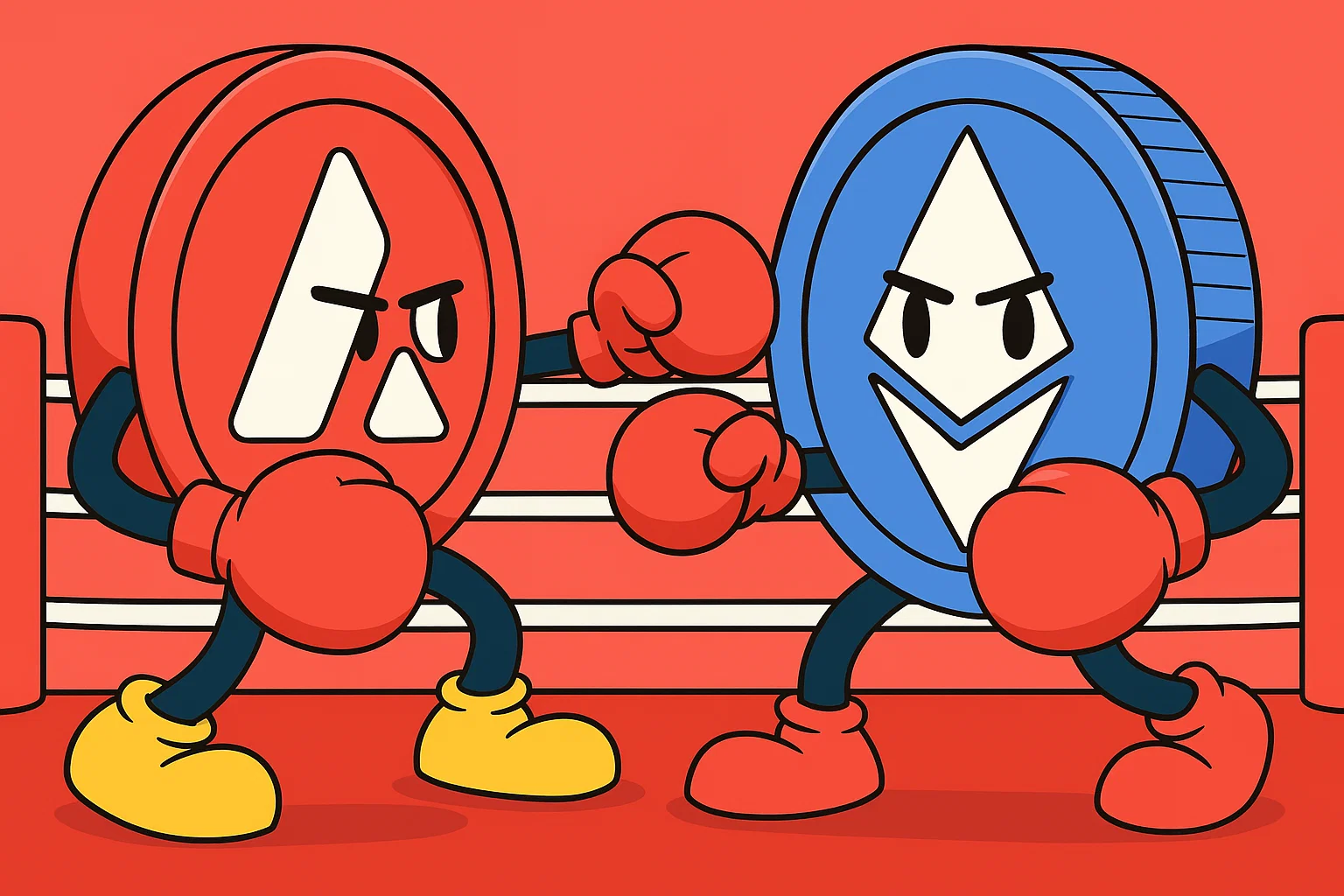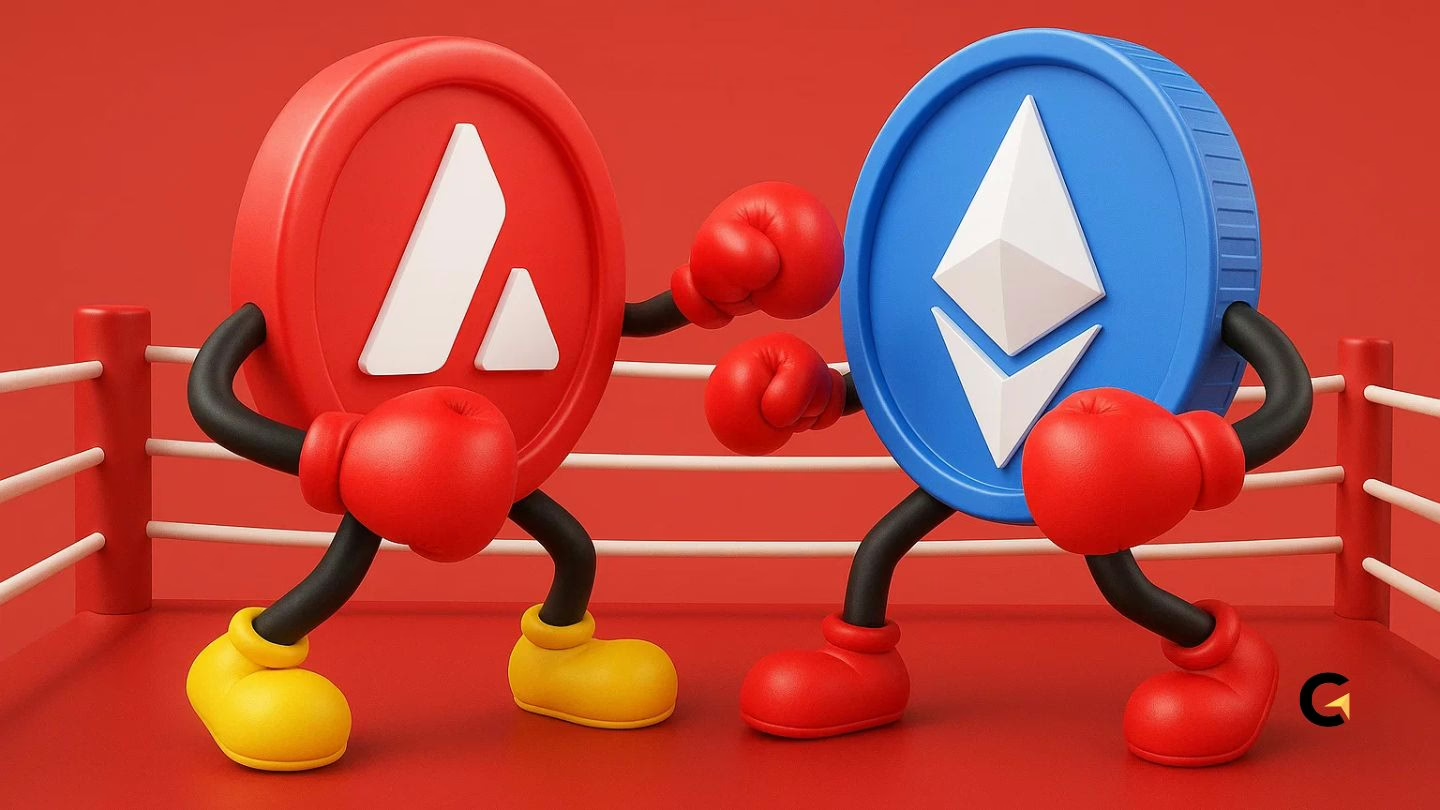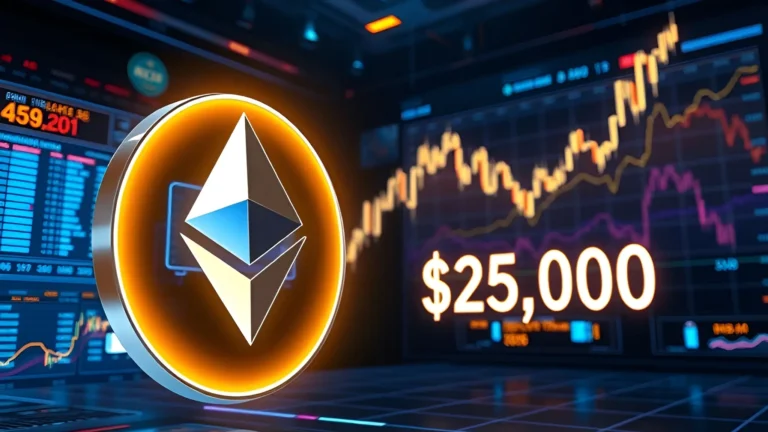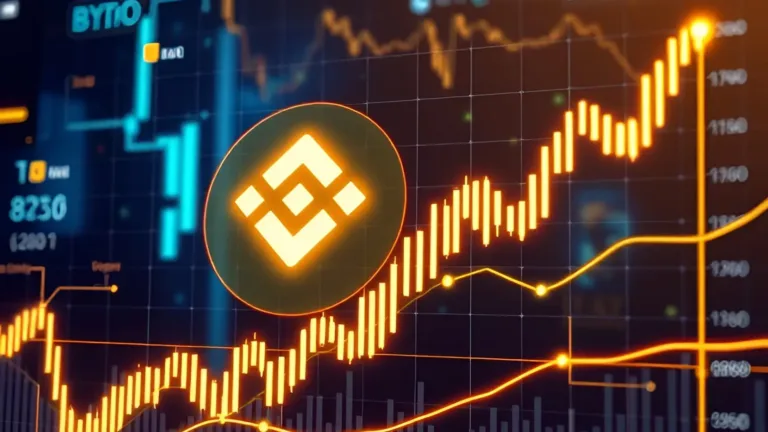Is AVAX better than ETH?
Is AVAX better than Ethereum? Well, Ethereum (ETH) dominates in liquidity, developer mind-share, and validator decentralization, now reinforced by mid-2024 spot-ETF approval. Avalanche (AVAX), though lighter and faster, boasts higher base staking yields, fixed supply, and modular subnets for enterprise use. ETH’s macro decoupling from BTC signals maturity, while AVAX still tracks the alt-coin pack—though its pending Grayscale trust hints at growing institutional interest.
Key Takeaways:
Hide- Liquidity Gap: ETH's \$300B market cap and deep liquidity dwarf AVAX, making it preferable for large-volume trading.
- Supply Structure: AVAX has a fixed max supply; ETH remains uncapped but deflationary during high activity.
- Validator Network: Ethereum has ~1 million validators; AVAX runs on a smaller, professional cohort with faster finality.
- Speed vs. Settlement: AVAX can handle more TPS, but Ethereum dominates in value settlement and DeFi volume.
- Staking Returns: AVAX yields ~7.29% APR, significantly higher than ETH’s ~2.75% via Lido.
- Ecosystem Breadth: Ethereum leads in DeFi, NFTs, and institutional adoption; Avalanche is growing in gaming and real-world assets.
- Governance Models: AVAX enables on-chain validator voting; ETH governance remains off-chain and rough-consensus based.
- Security & Risks: ETH has historical L1 exploits; AVAX’s main issues stem from bridges, not the core protocol.
- Compliance Edge: ETH approved for U.S. ETFs; AVAX ETF status is pending, but offers optional compliance via subnets.
- Investment Character: ETH is a blue-chip asset with steady fundamentals; AVAX is a high-beta bet on modular blockchain scalability.
Comparing AVAX and Ethereum: Which Is Better?

Which matters more for your next big play: Ethereum (ETH) unrivaled liquidity and developer ecosystem, or Avalanche’s blistering speed, hard-capped supply, and modular Subnets? Can Avalanche (AVAX) higher staking yields and enterprise-friendly design really outpace ETH’s deep liquidity, broad mind-share, and proven track record? Let’s dig in—where do you stand?
1. Market Metrics
| Metric (1 Jul 2025) | Ethereum (ETH) | Avalanche (AVAX) |
|---|---|---|
| Price | $2,486 | $17.94 |
| Market-cap | $300.1 B | $7.57 B |
| 24 h volume | $35.49 B (≈11.8 % m-cap) | $514.8 M (≈6.8 % m-cap) |
Take-away: ETH trades an order of magnitude deeper than AVAX, offering tighter spreads and lower market-impact for large orders. AVAX’s thinner liquidity means faster price discovery—but also sharper moves in risk-off regimes.
2. Supply Dynamics
- ETH – 120.72 M circulating; no hard cap. Net issuance just +0.48 % y/y thanks to EIP-1559 burn, turning ETH sporadically deflationary during high-fee periods.
- AVAX – 422.1 M circulating out of a hard-capped 720 M maximum; annual inflation 7.43 %, tapering linearly to 0 % by 2030.
Implication: Avalanche offers stronger long-run supply certainty, while Ethereum relies on fee-burn economics to contain dilution — a dynamic outlined in ETH Price Prediction 2030, which examines how continued EIP-1559 burns may shape ETH’s valuation over the next five years.
3. Consensus Mechanism & Security
| Property | Ethereum | Avalanche |
|---|---|---|
| Type | Proof-of-Stake (post-Merge) | Snowman consensus (variant of Avalanche PoS) |
| Active validators | ~1.03 M (March 2025) | 1,401 (Q1 2025) |
| Geographic node spread | 15,923 execution-layer nodes across 60+ countries | Concentrated in N. America & EU; validator count down, stake rising |
| Notable exploits | Historic DAO re-entrancy (3.6 M ETH, 2016) | No Layer-1 hacks; some bridge-related incidents with limited loss |
Security lens: Ethereum’s validator set is ~730× larger, boosting Nakamoto coefficient. Avalanche compensates with rapid probabilistic finality (<2 s) but depends on a smaller professional validator cohort.
4. Network Activity
- Throughput (theoretical): ETH main-chain ≈15 TPS vs. AVAX C-Chain benchmark of 4,500 TPS.
- Observed load (daily averages Q2 2025):
- Transactions: ETH ≈1.2 M tx/day; AVAX ≈3.8 M across subnets (peaks of 10.8 M on game days).
- Active addresses: ETH ~518 k/day; AVAX ~950 k/day during peak gaming events.
- Fee model:
- ETH — EIP-1559 dynamic base fee + 30-gwei median; partial fee burn.
- AVAX — EIP-1559-style with Avalanche9000 update slashing base fees by 96% in Dec-2024.
Interpretation: Avalanche’s high TPS appears mainly during subnet bursts; Ethereum remains dominant in value-settlement despite lower raw throughput.
5. Development & Ecosystem
- GitHub traction:
go-ethereumhas 49.2 k stars & 16 k commits;avalanchegoholds 2.2 k stars & ~14 k commits. - Roadmap:
- ETH – Dencun (Mar 2024) and Pectra (May 2025) now live.
- AVAX – Avalanche9000 (Dec 2024) reduced fees, unlocked $40 M in builder incentives; Teleporter enables cross-subnet messaging.
- dApp landscape: ETH leads in DeFi TVL ($51.9 B) and NFT volume; AVAX is growing in gaming & real-world assets (e.g., BlackRock’s BUIDL fund, Wyoming stablecoin pilot).
6. Tokenomics & Utility
| Aspect | Ethereum | Avalanche |
|---|---|---|
| Native use-cases | Gas, L2 data blobs, DeFi collateral, staking, governance | Gas on C-, X-, P-Chains & subnets, subnet creation, staking, governance |
| Staking yield | ~2.75 % APR via Lido | ~7.29 % APR when delegating to validators |
| Governance | Off-chain rough-consensus (EIPs); no direct token voting | On-chain parameter votes by validators; subnet tokens may differ |
7. Team, Community & Governance
- Founders: Vitalik Buterin & Ethereum Foundation vs. Emin Gün Sirer & Ava Labs.
- Social footprint: Ethereum has the largest global developer and user base. ETF inflows in June 2025 boosted sentiment. AVAX has momentum in gaming and real-world assets, evidenced by a 6% price jump on June 23, 2025.
- On-chain voice: ETH has flexible staking with no formal vote; AVAX allows validator-led on-chain governance, giving more formal power to token holders.
8. Regulatory & Compliance
- ETH – Nine U.S. spot-Ether ETFs approved 23 Jul 2024; SEC dropped “security” designation.
- AVAX – Nasdaq filing for Grayscale Avalanche Trust (April 2025) suggests commodity classification, but approval is pending.
- KYC/AML posture: Both base layers are permissionless; Avalanche subnets can offer optional whitelisting for compliance.
9. Ecosystem Risk Factors
| Risk vector | Ethereum | Avalanche |
|---|---|---|
| Historic exploits | DAO (2016), Parity multisig (2017) | No L1 hacks; bridge exploits limited via multi-sig and architecture |
| Bridge/oracle dependence | Heavily reliant on third-party bridges, especially for L2s | Native Warp-Messaging reduces bridge hops; early-stage but audited |
| Holder concentration | 53% of ETH staked in beacon contract | Top 10 AVAX wallets hold 7.47% of supply (includes exchanges) |
10. Macro & Sentiment Indicators
- Correlation to BTC (90-day): ETH dropped from 0.63 – 0.05 by May 2025; AVAX remains moderately correlated at 0.34.
- Protocol revenues: ETH maintains consistent fee burn, earning its “crypto dividend king” title. AVAX fee revenue dropped 62% QoQ after Avalanche9000.
- Social sentiment: ETH ranked in “Greed” zone due to ETF activity; AVAX sentiment flipped bullish after subnet announcements and enterprise interest.
Is AVAX a Better Investment Than ETH?
Ethereum own deep liquidity, unmatched developer network, institutional approval (ETFs), and continued L1/L2 upgrades (Dencun, Pectra). However, still constrained by low base-layer throughput, some L2 complexity, and validator pool concentration.
While Avalanche serve deterministic supply, rapid TPS bursts, subnet flexibility, and higher staking yields. However, smaller validator set, less liquidity, and inflation pressure until 2030; narrower adoption beyond gaming and enterprise pilots.
All in all, ETH plays the role of a crypto blue-chip with tech-stock qualities, while AVAX offers a higher-beta exposure to modular innovation and subnet-driven scalability.







